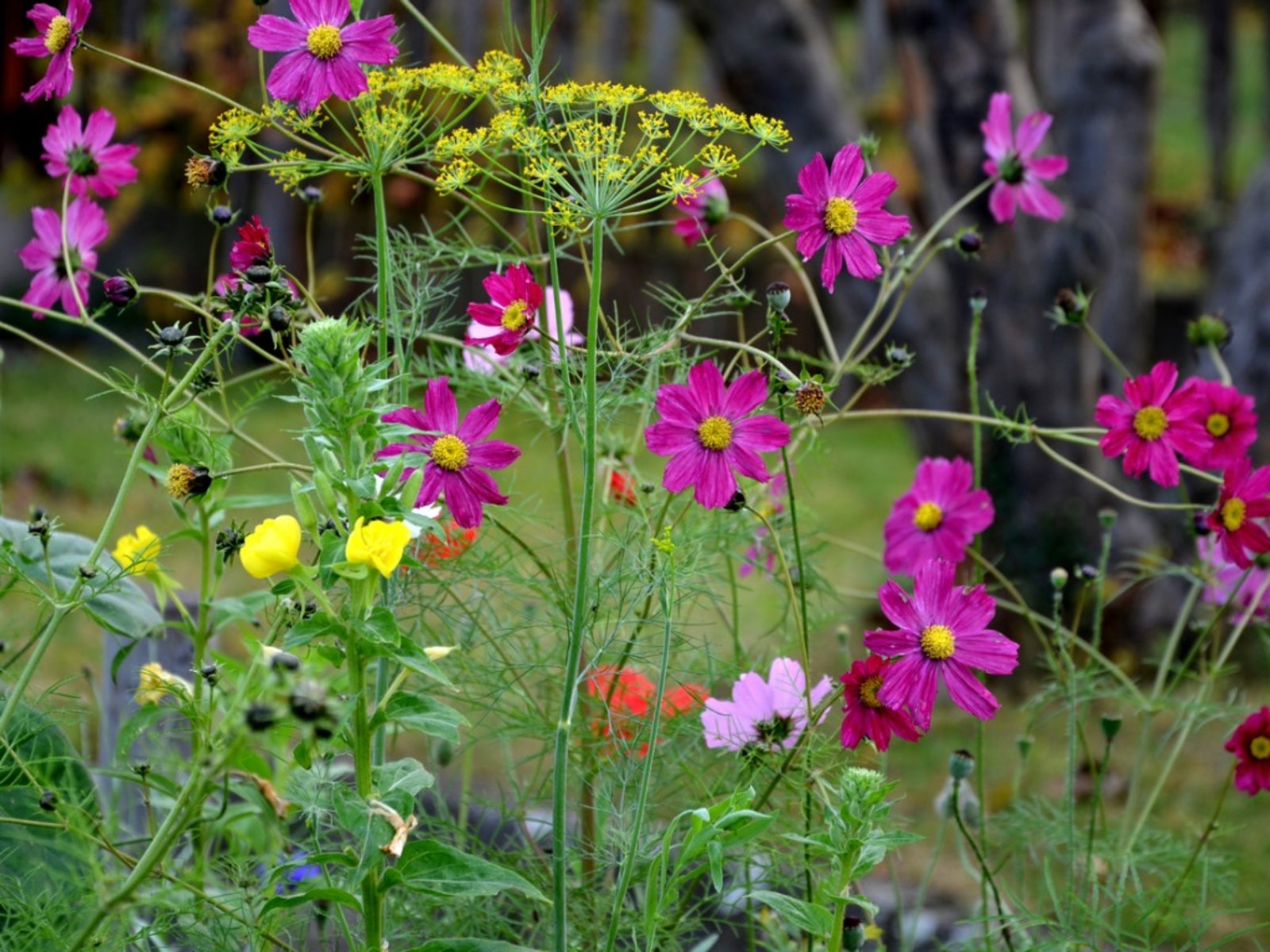Companion Plants For Cosmos – Learn About Cosmos Companion Plants


What grows well with cosmos, and why do cosmos need companions? Companion planting serves a number of valuable purposes in the garden. For example, the buddy system, most often used for veggies, makes good use of space, reduces pests and weeds, and allows neighboring plants to share nutrients. Companion planting may also reduce erosion and provide protection from cold and heat. However, companion planting is also beneficial for cosmos and other ornamentals. So, just what are good companion plants for cosmos?
Companion Planting with Cosmos
Cosmos don’t attract many pests – except aphids. Sometimes cosmos are put to work in the garden by drawing aphids away from other plants, a method known as decoy planting. For example, plant cosmos away from your prized roses. The cosmos plants take the brunt of the aphid attack while the roses benefit. Negate the damage to the poor, sacrificed cosmos with a regular dose of insecticidal soap spray or neem oil. There are a number of plants that work well with cosmos and vice versa. Here are the most common cosmos companion plants.
Vegetable companions
- Tomatoes – Cosmos and tomatoes get along like old friends. Cosmos attract bees and other friendly pollinators, which often pay a visit to tomatoes while they’re in the neighborhood. As a result, tomato fruit set is increased. For the same reason, cosmos are a beneficial neighbor to squash and many other blooming vegetables.
- Beets – Beets actually do fine without cosmos, so what’s the reasoning behind this combination? It’s mainly aesthetic, as the dark red beet leaves are striking against the colorful blooms and lacy foliage of the cosmos plant.
Cosmos flower companion plants
- Cannas – This tall, sturdy, stately plant bears unique blooms in colors ranging from yellow to pink and red, all on tall, stiff stalks. Dwarf varieties of canna are also available.
- Marigolds (Tagetes) – Marigolds are familiar, hardworking annuals valued for their orange, yellow or rusty red blooms borne on single, sturdy stems.
- Crocosmia – Also known as Monbretia, crocosmia is an interesting plant with bright orange or red funnel-shaped blooms rising above clumps of sword-shaped leaves.
- Helenium – Also known as sneezeweed or Helen’s flower, this is a reliable plant that blooms profusely from midsummer to autumn. Helenium comes in shades of rich gold, burnt orange, yellow, mahogany, burgundy and rust.
- Dianthus – Also known as Indian pink or China pink, dianthus are neat, shrubby plants blooming in shades of white, pink and red with pink edges.
- Poppy – Poppies, a group of colorful plants that include annuals, tender perennials and biennials, are beloved for their cup-shaped blooms in intense shades of every color except blue.
- Verbena – The rugged verbena plant produces dark green foliage and clusters of small, flat blooms in a variety of bright colors.
- Cleome – Also known as spider flower, cleome is a fast-growing annual with masses of spiky blooms from early summer until the first frost. Cleome is available in shades of white and pink, as well as a unique shade of purple.
Sign up for the Gardening Know How newsletter today and receive a free copy of our e-book "How to Grow Delicious Tomatoes".

A Credentialed Garden Writer, Mary H. Dyer was with Gardening Know How in the very beginning, publishing articles as early as 2007.